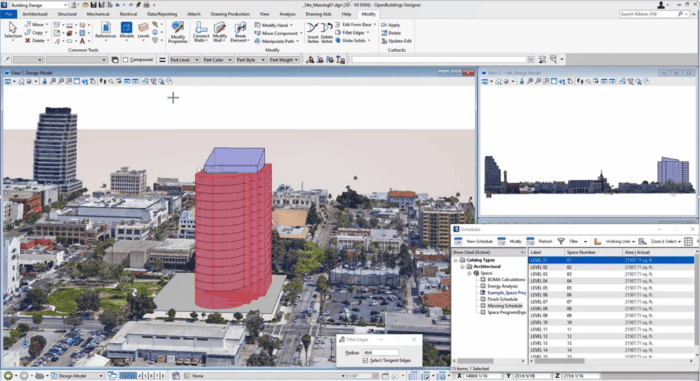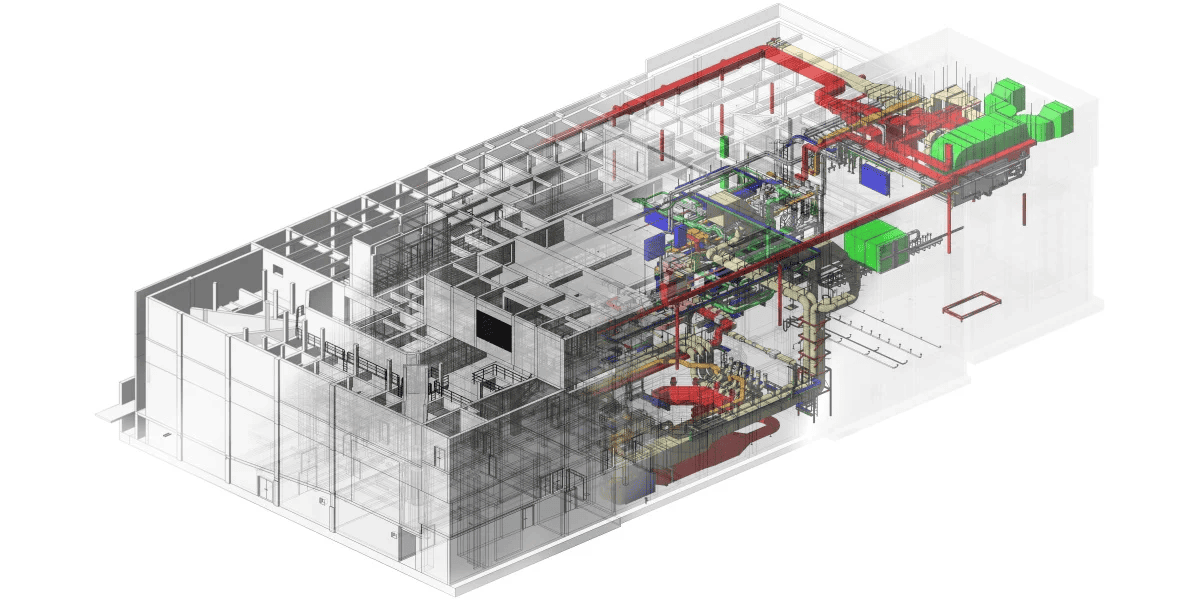The freedom to design anything — with unlimited information properties on top of moving models between applications — has always been a critical challenge for the AEC industry. OpenBuildings Designer, an all-in-one building design software, breaks down those barriers with its feature-rich drawing, parametric modelling, and object-based modelling capabilities. Plus, it has the ability to read and write multiple file formats that span multiple disciplines and industries. With a broad set of features, OpenBuildings Designer allows designers to create and explore geometry and data with complete freedom and flexibility.
A Flexible BIM Tool – What Does it Mean and Why Does it Matter?
AEC firms undertake a variety of projects that differ in scale, complexity, and requirements. Having a toolset that allows organizations to adjust or accommodate their activities to align with project requirements without restriction, can help create efficient workflows while making effective use of in-house skills and professional experience.
Consider the following propositions:
- Not all projects will be fully executed in 3D from start to finish
- Not all projects need to go beyond either concept stage or concept and design stages
- There will be a need for fixed representations as well as flexible parametric representations of geometry
File Format Flexibility – The Key to Effective Collaboration
The foundation of this flexibility is based on Bentley’s approach to “OPENness.” The dgn file format is standard across the Bentley portfolio of products allowing multiple disciplines to view and read the geometry from other discipline toolsets. OpenBuildings Designer can reference, open, and use geometries from non-Bentley applications such as Rhino, SketchUp, AutoCAD, and IFC. In areas where these geometries don’t have intelligence, such as information properties, materials, or drawing re-symbolization, OpenBuildings can apply these properties to the objects. This approach lets users see and embellish the original design intent and repeat the process should design continue in the originating application. Users can then distribute the OpenBuildings Designer models to the broader team in many formats, such as IFC. This contributes to the fast and efficient sharing of information between design collaborators, clients, and key stakeholders.
Workflow Example:
If you work with Rhino to do free-form modelling, a point may come where the user wants to use the Rhino model to produce drawings or even give the objects some meaning with information properties and turn it into a BIM model.
OpenBuildings Designer allows the referencing or importing of many file formats, including Rhino’s 3dm. Take a solid representing a slab. The solid from Rhino can be copied into OpenBuildings Designer and have the Slab catalog applied. This will change the slab representation, giving it a concrete material and in the section re-represent that with a line weight of choice and a concrete patterning, if desired. Furthermore, Slab properties are applied to the object or custom properties if required by the user. These properties can then be scheduled for bills of material.
In addition, the object becomes native, and its geometry can be edited in OpenBuildings—for example, punch holes for slab penetrations.
Meet Complex Information Requirements and Challenging Deadlines with Predefined Libraries
OpenBuildings Designer delivers example data sets and libraries of predefined object definitions, geometries, and attribute schemas. This system is highly customizable, allowing organizations to optimize content and align them to project requirements.
Beyond these libraries, OpenBuildings Designer contains a variety of modelling and data management features that allow organisations the flexibility and control to help meet all manner of design needs, information requirements, and challenging deadlines at the various stages in projects.
Users can leverage the following features and toolsets of OpenBuildings Designer in combination, to deliver the appropriate level of information and geometry required by all projects and all the exchange of information requirements of the commissioning body:
- Parametric and history-based solid and surface modelling
- Mesh modelling
- Parametric component creation
- Dedicated object-based tools
- Computational design via OpenBuildings GenerativeComponents
Workflow Example:
Dedicated object-based tools in BIM applications can find their geometrical limits. Take a wall as an example. For the most part, walls are vertical and straight or curved in one direction, or they might have a slant. But what if that wall requires a curve in two different directions.
The designer shouldn’t let the limits of a tool get in the way of design freedom. OpenBuildings Designer can incorporate parametric and history-based surface and solid modelling into the same design and environment. By reaching for the surface tool and creating the surface, it can be thickened to a solid. The original surface remains in the history allowing the user to pull and push the handles to massage the form of the surface, and subsequently the solid into a complex form. If data is applied to that solid, a Concrete Wall, for example, and give it all the material, drawing, and information properties as a standard wall, it can be molded, crafted, and manipulated to create any required form in the same context as the design.
OpenBuildings Designer also contains a flexible attribute schema engine that allows custom catalog and properties to be created and assigned not only to 3D geometry but also 2D geometry, facilitating the ability to enrich geometry with metadata for schedules, quantities, and information management purposes according to project needs.
Closing Thoughts
In summary, OpenBuildings Designer is an intelligent BIM software offering a model-based process that provides AEC professionals with better insight into how their work fits into the project as a whole, leading to enhanced collaboration. Ultimately, by working together as a multi-disciplinary team, users will have complete flexibility and the freedom to use the model’s information to improve the design.
Undoubtedly, the power of BIM is growing and accelerating the extent of digital transformation in the AEC industry.
Interested in a no-risk, free trial of OpenBuildings Designer? Click on the button below:









